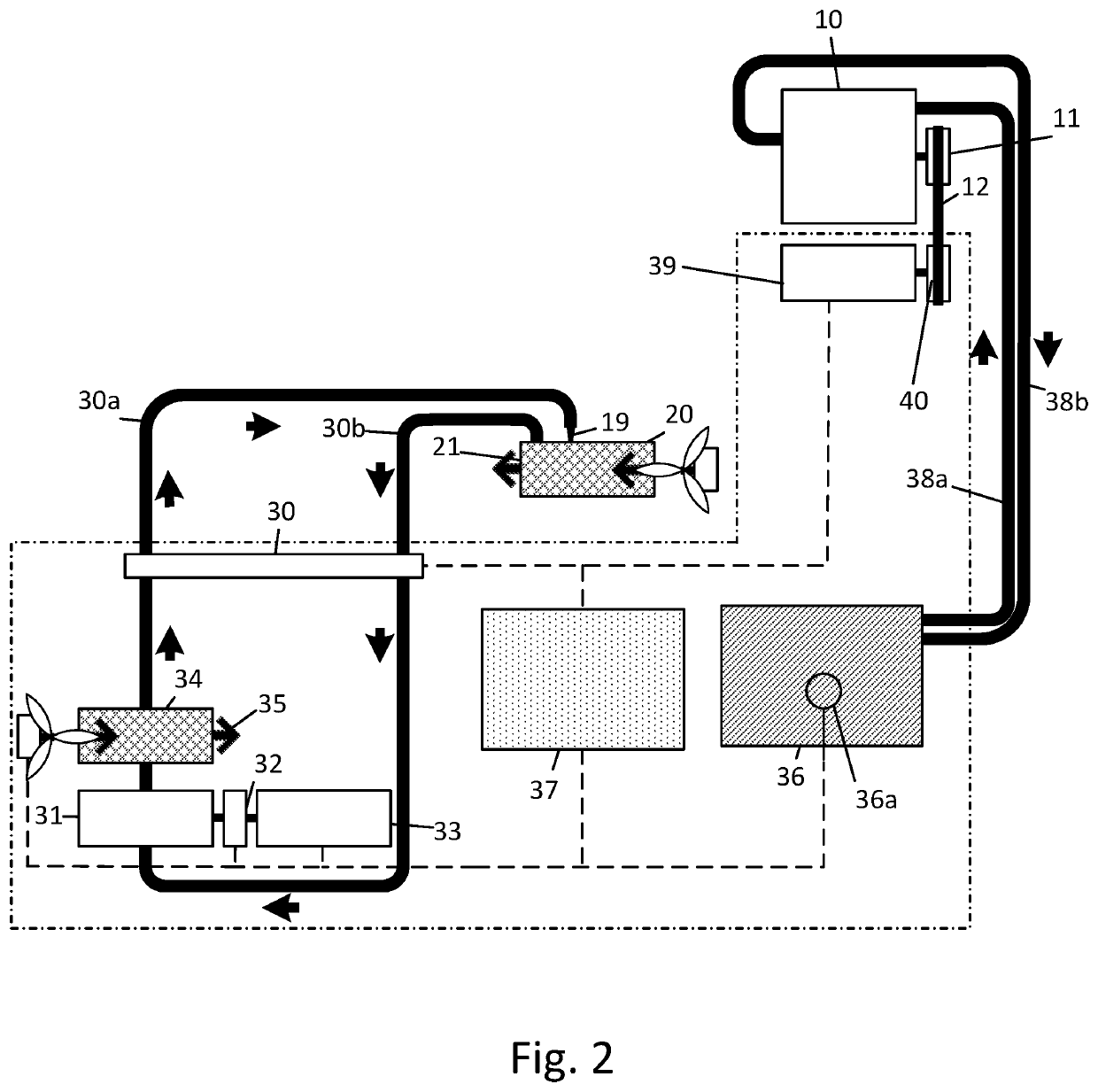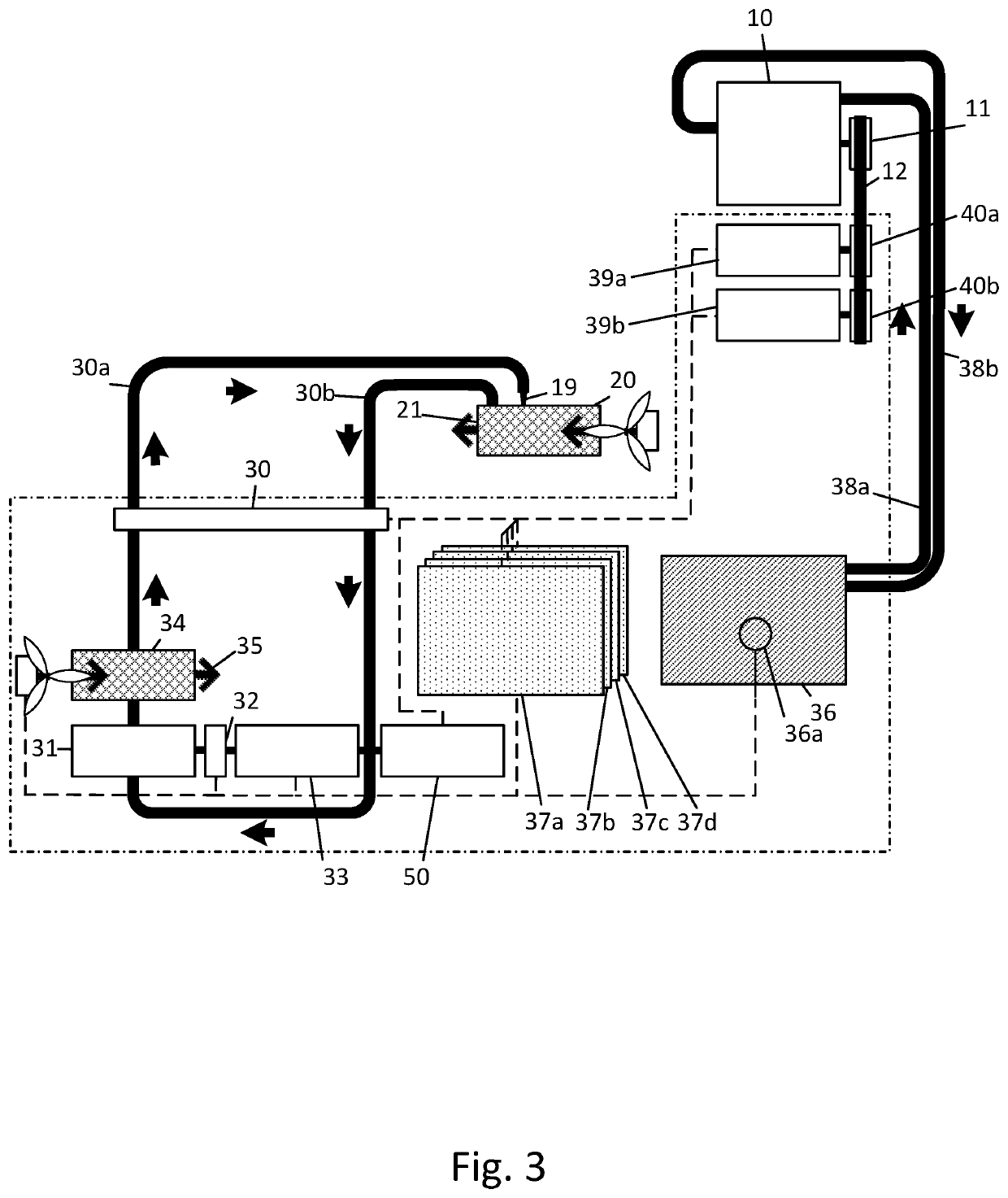Auxiliary Air-Conditioning System for Over-the-Road Trucks
a technology for auxiliary air conditioning and trucks, which is applied in vehicle components, vehicle heating/cooling devices, water heaters, etc., can solve the problems of only logging certain hours and still relatively dirty drivers, and achieve the effect of ensuring thermal stability
- Summary
- Abstract
- Description
- Claims
- Application Information
AI Technical Summary
Benefits of technology
Problems solved by technology
Method used
Image
Examples
Embodiment Construction
[0011]Referring now to FIG. 1, a block diagram of prior art vehicular mounted air-conditioning system is show. Standard vehicular compressor 14 is mechanically coupled to motor 10 by means of belt 12. Belt 12 runs in belt guides 11 and 13. Standard vehicular compressor 14 is energized as needed by means of a clutch in belt guide 13. Motor 10 is ordinarily the main motor of the vehicle. Such motors are powered by diesel, gasoline, LPG / LNG and so on. Alternately, motor 10 may be an accessory motor and may itself be electric.
[0012]Standard vehicular compressor 14 compresses the refrigerant. The refrigerant may be any chloro / fluorocarbon compound suitable for the task. Ordinarily, R134A is used in vehicles, but there are numerous other refrigerants currently deployed and / or under development and deployment. For example, HFO-1234yf is currently under wide deployment in vehicular air-conditioning systems. Also, R12, R152A, and R774 (or refrigerant grade CO2) have been used.
[0013]Compresse...
PUM
 Login to View More
Login to View More Abstract
Description
Claims
Application Information
 Login to View More
Login to View More - R&D
- Intellectual Property
- Life Sciences
- Materials
- Tech Scout
- Unparalleled Data Quality
- Higher Quality Content
- 60% Fewer Hallucinations
Browse by: Latest US Patents, China's latest patents, Technical Efficacy Thesaurus, Application Domain, Technology Topic, Popular Technical Reports.
© 2025 PatSnap. All rights reserved.Legal|Privacy policy|Modern Slavery Act Transparency Statement|Sitemap|About US| Contact US: help@patsnap.com



